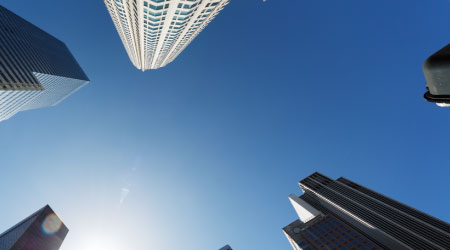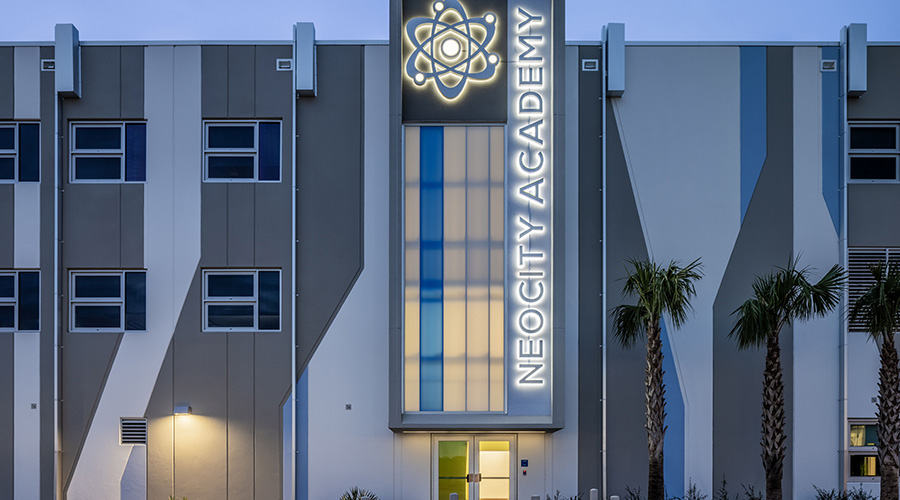As Climate Change Accelerates, So Must Resilience
Forward-thinking facility managers are combining resilience strategies with sustainability goals to better future-proof facilities.
First, the good news: The technologies and science exist now to slow and eventually reverse climate change. Alternative energy solutions like solar and wind are economically viable, and can be deployed at scale at prices competitive enough to phase out earth-destroying fossil fuels. This is according to the most recent report from the Intergovernmental Panel on Climate Change (IPCC), released April 4, 2022.
But now the bad news: politics have interfered with the ability to roll out climate mitigation strategies on a large scale.
And the bad news doesn’t end there. In another part of the report released earlier in February, the IPCC explained that the climate is changing much faster than our ability to adapt to it. It was the “bleakest warning yet” of the effects of climate change. This part is particularly relevant for facilities because it again focuses a stark spotlight on the criticality of resilience.
“We should no longer be looking at climate change as something that we will have to deal with down-the-road,” says Alex Wilson, president of the Resilient Design Institute. “It’s here now, and making sure that our buildings and infrastructure will be able to deal with the impacts of a changing climate should be a top priority of facility managers.”
So, yes, focusing on resilience strategies now and into the future is crucial. With every challenge comes opportunity. Strategies like renewable energy, backup power and energy storage, facility hardscaping, exterior upgrades, passive heating and cooling, deep energy retrofits, and so many more are still absolutely vital for facilities to survive and recover from extreme weather events fueled by changing climate.
“When we’re talking about resilience particularly of buildings, adaptation typically means improving the performance of new and existing infrastructure to better withstand the inevitable impact of climate change,” says Evan Reis, a structural engineer and executive director of the U.S. Resiliency Council. “Therefore, in the building space the need to adapt to a changing climate through resilient design is more essential than ever. In other words, we need to make sure our building stock can perform well as storms become more intense, floods more severe and wildfire more frequent.”
That’s to say, resilience will only become more important as climate change worsens.
“Facilities must also assess the physical risks that climate change poses to their assets and to the supply chain, and invest in resilience strategies to respond to increased flooding, extreme heat, wildfires, drought, sea level rise, and other climate-exacerbated natural disasters,” says Diana Shoder, manager of the Urban Land Institute’s Building Health Places Initiative.
Many organizations are even coming to terms with the idea that resilience for existing buildings may not be enough. They’re beginning to look at moving operations away from especially hazard prone areas, like coastal regions or hurricane zones. Jim Newman, founder and principal with consulting firm Linnean Solutions, says that is the real thrust of the IPCC reports: That the effects of climate changes are going to in the “top of the ranges that we’ve been considering for the last several years. This means that there will be some places that are not ‘defendable.’ Some places may need to be abandoned. This is a big shift. Responsible facility managers need to look carefully at how vulnerable their facilities are to natural hazards, in order to start planning now. Some functions may be better served by relocating to safer locations.”
That is likely a shocking notion for many organizations. But again, this is an opportunity masked as a challenge.
“In some cases, it may be more cost-effective to move operations to areas with fewer climate impacts altogether,” says Shoder. “Moving is also an opportunity to integrate strategies to simultaneously and efficiently promote health while tackling climate change from both mitigation and resilience standpoints, as outlined throughout the report.”
Even if organizations decide to maintain current operations, Shoder’s point about implementing strategies that combine multiple goals is relevant for all facility managers. For example, even though resilience and sustainability are technically different, the Venn diagram of these strategies includes quite a bit of overlap.
Green and strong
When facility managers focus on sustainability and resilience, they’re helping to create a positive feedback loop that both makes facilities better able to withstand climate emergencies and also helps reduce the likelihood of those emergencies in the long-term. The most commonly cited examples of this two-for-one idea are energy efficiency and renewable energy. If a weather disaster causes the grid to go down, facilities that have invested in renewable energy like solar or wind can “island” and still have electricity to operate key facility functions – which shouldn’t require much energy anyway because steps have been taken to reduce their use in normal times. At the same time, renewable energy and energy efficiency reduce carbon emissions. The less fossil fuels burned, the less greenhouse gases are emitted, and the acceleration of climate change can be slowed.
“As facilities chart a path to net-zero carbon — such as by doubling down on energy efficiency — they are not only helping to avert the most severe climate impacts but also enabling their renewable backup power to last longer in case of an emergency,” says Shoder. “Rather than relying on fossil fuel-based infrastructure, facilities can intentionally harness the co-benefits of their mitigation strategies to minimize the impacts of a disaster on business operations.”
There are several other examples of facility strategies that hit both marks, say Shoder. These include encouraging multimodal transportation, using passive design strategies, building cool and green roofs, installing all-electric systems, weatherizing the building, and selecting low-carbon materials that can withstand natural disasters, are nonflammable, and are mold-resistant.
Reis also suggests facility managers should pay close attention to material selection for building products as a combination resilience and sustainability strategy.
“The good news is that many materials we currently use to build – concrete, wood, and steel – can be designed resiliently at a small or no overall cost premium, typically 0 to 2 percent of the project cost,” he says. “Such a small investment in stronger, better performing buildings could mean the difference between a building that can keep functioning after a natural disaster, and one that gets relegated to a landfill.”
Still, resilience and sustainability aren’t a perfect fit. There are notable resilience strategies that in the short-term look detrimental to sustainability goals.
“Some aspects of resilient design, such as redundant power and water systems, or building thicker concrete walls, take more resources and could be seen as in conflict with sustainability goals,” says Wilson.
In the long-term, however, even these resilience strategies do have a solid sustainability story.
“Avoiding damage to a building that could result from flooding, high wind, earthquakes, or wildfire, is a fundamental sustainability strategy. That’s because those measures can help avoid the environmental costs of repairs or re-building,” says Wilson. The greenest building, after all, is one that doesn’t need to be built (or rebuilt).
Business continuity
Resilience, though, is not just about making sure a building is still standing. Maintaining or resuming operations after a disaster should be one of the key goals of any resilience strategy. According to FEMA, about 40 percent of businesses close permanently after being offline for more than two months after a disaster.
“Ensuring business continuity and speeding disaster recovery can be the easiest way to gain buy-in from company management for resilience measures,” says Wilson.
Showing how investments in resilience, then, can literally keep an organization afloat is the best justification case for these strategies.
Newman offers three tips for maintaining business continuity after a weather disaster.
1. Don’t let your facility get knocked out by small stuff. Managers should make sure that they understand the more common hazards in their area and upgrade the facility to be able to weather the things that happen more often.
2. Have a plan and the equipment to be able to run critical systems when all else fails. Critical systems will be both life safety equipment but might also include minimal ventilation to keep mold from growing and might well also include water to keep both equipment and processes going.
3. Have systems set up for remote work. Everyone learned this lesson two years ago, but don’t forget it. Many processes can be run remotely, so prepare for this.
Plan. Then plan some more. And when managers think they’re done planning, keep planning. Too many organizations only think about resilience as front-end strategy and don’t understand what to do to continue operations after a disaster.
And it’s not like disasters are becoming any less frequent. As the IPCC reports showed, climate change is worsening faster than we ever thought. But as Reis says, all is not lost. There is hope. The facilities industry has the tools. It has the know-how. Now, managers and their departments just have to put them in place.
“The good news is that the engineering and architectural professions are fully capable of bringing resilient design to our buildings right now,” Reis says. “The science is here, it is tested and it works. Resilience isn’t something that we have to wait for a future breakthrough to achieve."
Greg Zimmerman is editor, facility group, which includes FacilitiesNet.com and Building Operating Management. He has 18 years' experience covering sustainability and technology in facilities.
Related Topics:














